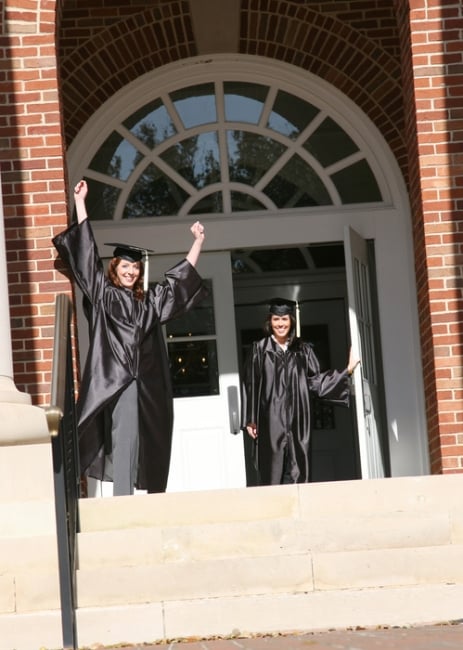You have /5 articles left.
Sign up for a free account or log in.

Istockphoto.com/Steve Debenport
A growing number of Latinx students are entering the realms of higher education, reflecting nationwide demographic shifts. Nevertheless, Latinx faculty members remain significantly underrepresented. As recently as 2015, they made up only 4 percent of the overall professoriate.
Many scholars have written about the powerful impacts of having access to role models who share an ethnic background and the crucial role of mentorship for Latinxs in higher ed, particularly as many Latinx graduate students and faculty members alike are the first in their families to pursue an advanced degree and careers in academe. The intensity of this shared experience provides a rich ground for developing strong connections in and out of the classroom. Drawing from the Latinx cultural practice of padrinos and madrinas, we suggest “academic ninos” as a term to describe a relationship that begins as graduate student-professor and organically develops into one that remains professional, yet it is deeply collegial and personal.
In Latinx cultures, padrinos and madrinas -- colloquially referred to as ninos -- are invited to join a family with the purpose of assisting the parents with raising their child, a practice commonly referred to as compadrazgo. The nino might be a family member or a close friend prior to taking on that honorary role, someone whom the parents deeply trust and believe to be a responsible, dependable role model for the child, particularly as the commitment is expected to be lifelong -- even to the point of ninos raising the child if something were to happen to the parents. Through the years, ninos’ support is not merely superficial, in the form of presents on birthdays or financial contributions to life events such as quinceañeras and weddings. Instead, they provide emotional and spiritual guidance that underscores the family’s values and morals, keeping children on the right track. Most important, because they are not the parents, ninos have the opportunity to open a new avenue of communication with children, talking to them about topics and in ways that parents are not able to do.
It is on this latter point that the figure of the nina or nino has multiple uses for first-generation Latinx scholars. Our initial connections are forged in the space of the classroom. However, over time and outside class, faculty-student bonds can transform into a more personal, long-standing, family-like connection. As students discover themselves as scholars, they frequently seek out guidance about other aspects of academic life, such as networking, navigating institutional bureaucracies, balancing work and personal lives, and confronting the emotional challenges of being a first-generation scholar. Students look to certain faculty members as mentors, role models, counselors, interlocutors and friends who understand the complexities of building an academic career. The term “academic parent” does not quite work, because metaphors of family, while alluring, do not ultimately fit professional relationships. “Academic ninos” is a better term to describe the supportive relationship that can grow close despite a junior/senior scholar hierarchy. In a sense, academic ninos provide what some refer to as “lantern” mentoring, where a more experienced scholar shines a light on the structures of academe so that a younger scholar can find her own path forward.
A Validating Agent
Academic ninos come in handy for many situations. For example, a Latina student with a male primary adviser might turn to an academic nina to discuss issues about navigating spaces of higher education as women. Similarly, a student may gravitate to an academic nino who understands the challenges of balancing scholarship and teaching with the demands of parenthood. The support fostered in such relationships, however, is not unidirectional. Academic ninos benefit from the rapport and emotional support of up-and-coming scholars. It feels good to translate hard-learned lessons into advice and strategizing that can help someone else.
Other scholars have found the padrinos/madrinas metaphor useful, whether discussing Latinx alumni or describing a particular style of community mentorship. In fact, the concept of academic ninos is grounded in several areas of literature. For example, validation theory frames the importance of a university personnel providing validation to students by not only motivating them and making them feel welcome on the campus but also reassuring them that they belong and are capable of succeeding. In their role, the academic nino acts as a validating agent within the university to the Latinx student.
Similarly, the work that has been done on community cultural wealth indicates the need to acknowledge and cultivate students’ assets that they bring with them to the university. The nino further cultivates such forms of wealth by sharing similar experiences, providing informal mentorship and guidance in the personal, professional and academic areas of the students’ lives.
Furthermore, a psychosociocultural approach incorporating psychological, social and cultural components has also been employed to understand Latinx student experiences within the university and particularly the forms of support and mentorship that they need for persistence. Again, this perspective affirms the importance of providing validation and affirmation. The family-like orientation of the relationship between the academic nino and the student will further provide support and help the student embed their cultural values within the university system.
Like any relationship, each person has particular roles and responsibilities to the other. For the ninos, it means being reasonably available for consultation, being open and honest about our journeys through higher ed, maintaining confidentiality, offering a nonjudgmental space where a student can ask any question, and being proactive about checking in. Above all else, ninos must help to identify areas of knowledge and navigational know-how that first-generation Latinx students have not yet had need to learn.
For students, it means not taking advantage of the ninos’ time, reciprocating the support and confidentiality, taking ninos’ advice seriously, and also putting in the effort to maintain the relationship and stay in touch, especially after students move to another academic institution to continue their training or start a teaching position.
We are fortunate to have forged this type of relationship and friendship with each other. In fact, the writing of this piece modeled the academic nina relationship. We met while Alicia was a master’s student in Magdalena’s department and kept in touch after she graduated and began her doctoral studies. At a recent conference, we were eager to catch up not only on our latest research and projects but also on other aspects of our lives. Alicia, struck by how comfortable she felt opening up about the personal, commented, “You’re like, well -- not my academic mom but more like my academic nina.” Interested in the richness of this term, Magdalena suggested, “We should write something about this!” Over a series of videoconferences, we outlined and drafted the essay in a shared document.
Thus, this writing was a collaboration that went beyond a formal adviser/mentee relationship. That relationship remains professionally rooted yet is enhanced by mutual respect and the connection of a growing friendship. And it is but one example of how, as Latinxs create a stronger presence in higher education institutions, we have the opportunity to introduce and contribute cultural practices like compadrazgo to widen the path for younger scholars and make academe a more supportive space for everyone.




